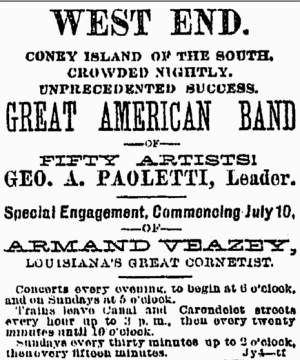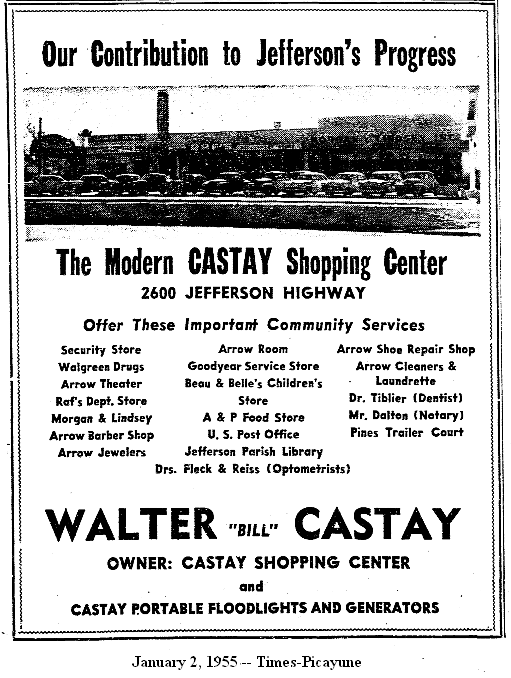|
Today in New Orleans History |
|
|
January 2



 

And You won't pay a penny more! To receive an update for each day in New Orleans history,
join our facebook page - Today in New
Orleans History
On January 2, 2012 the Allstate Sugar Bowl Football Classic (the 78th Sugar Bowl game was
played. It was the 36th ito be hosted in the Superdome.
Andrew James McShane (January 2, 1865 – April 17, 1936) was mayor
of New Orleans from December 6, 1920 to May 4, 1925. McShane was born in New Orleans, the son of two Irish-American
Catholics, Bernard McShane and Rose (Fitzpatrick) McShane. After his father died, he entered
the hide business at the age of nine, working his way through the ranks as a travelling salesman before becoming sole owner
of his firm at the age of twenty-one. His business was very successful. He married Agnes Bruns of New Orleans in 1918; they
had one daughter, Rosemary. McShane was involved in New Orleans politics throughout his adult life. He was associated with
the reform-oriented groups that were opposed to the machine politics of the Regular Democratic Organization, or Old Regulars.
He held posts in the administrations of reform mayors Walter Flower and Paul Capdevielle. McShane ran for a city council seat
in 1912 under a ‘good government’ platform, but lost. In the election of 1920, McShane was the mayoral nominee
of the reform-oriented Orleans Democratic Organization. The endorsement of reform governor John M. Parker helped him narrowly
defeat the incumbent Old Regular mayor, Martin Behrman. Despite the reform promises of the new administration, McShane was
able to achieve very little. He and his administration were hampered by inexperience at city government and by dissension
between various factions of his supporters. He was able to improve garbage collection, reform the Department of Public Works
and the city’s finances, and create a system of one-way streets to improve traffic flow. McShane ran for re-election
in 1925, but was soundly defeated by former mayor Martin Behrman. After his defeat, the Old Regulars would continue to control
the city until 1946. McShane Place, a block-long street connecting Rampart Street and St. Claude Avenue, is named after him.
http://upload.wikimedia.org/wikipedia/commons/8/8d/Andrew_J_McShane.jpg
|
|
|

To receive an update for each day in New Orleans history,
join our facebook page - Today in New
Orleans History.
Analytics |

 On January 2, 1955 the "Modern Castay Shopping Center at 2600 Jefferson Highway advertised "Our
Contribution to Jefferson's Progress" before most of the Jefferson Parish subdivisions sprung up near the Veterans Highway
corridor. Walter "Bill" Castay opened the center in 1948, which included an A&P grocery store, a post office,
and a theater, barber shop,and reception hall -- all named "Arrow".
On January 2, 1955 the "Modern Castay Shopping Center at 2600 Jefferson Highway advertised "Our
Contribution to Jefferson's Progress" before most of the Jefferson Parish subdivisions sprung up near the Veterans Highway
corridor. Walter "Bill" Castay opened the center in 1948, which included an A&P grocery store, a post office,
and a theater, barber shop,and reception hall -- all named "Arrow". 
